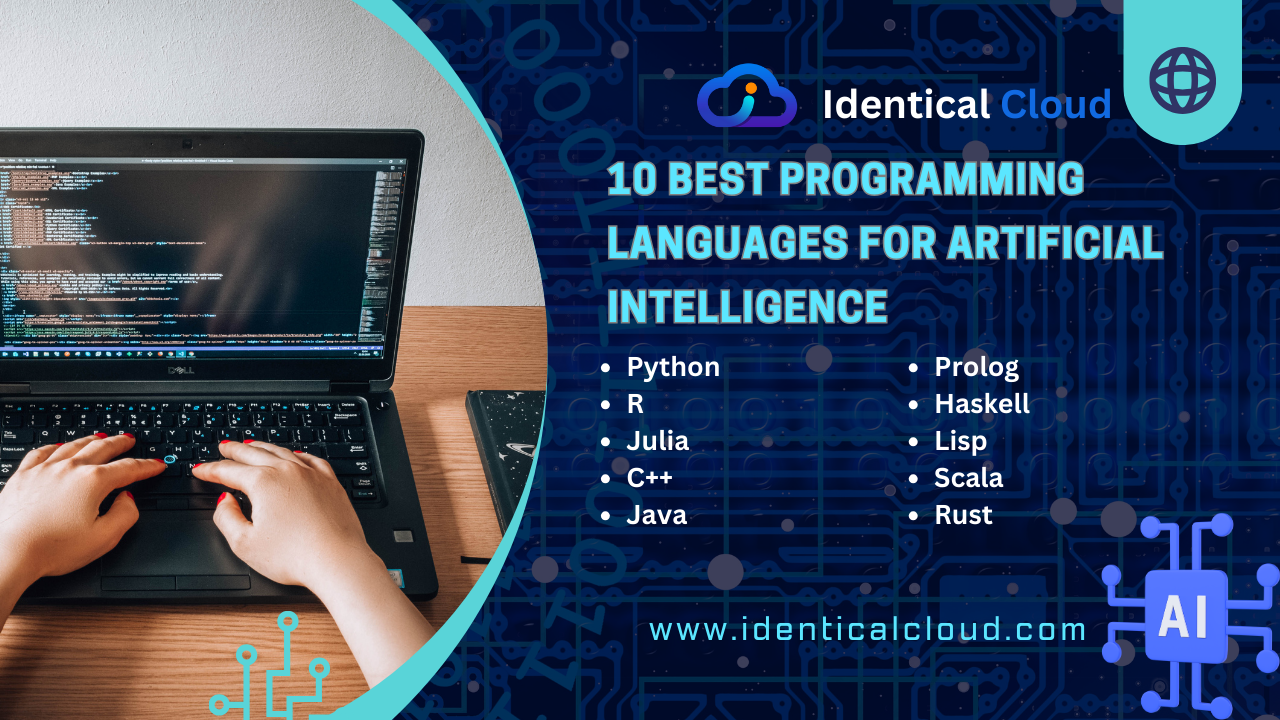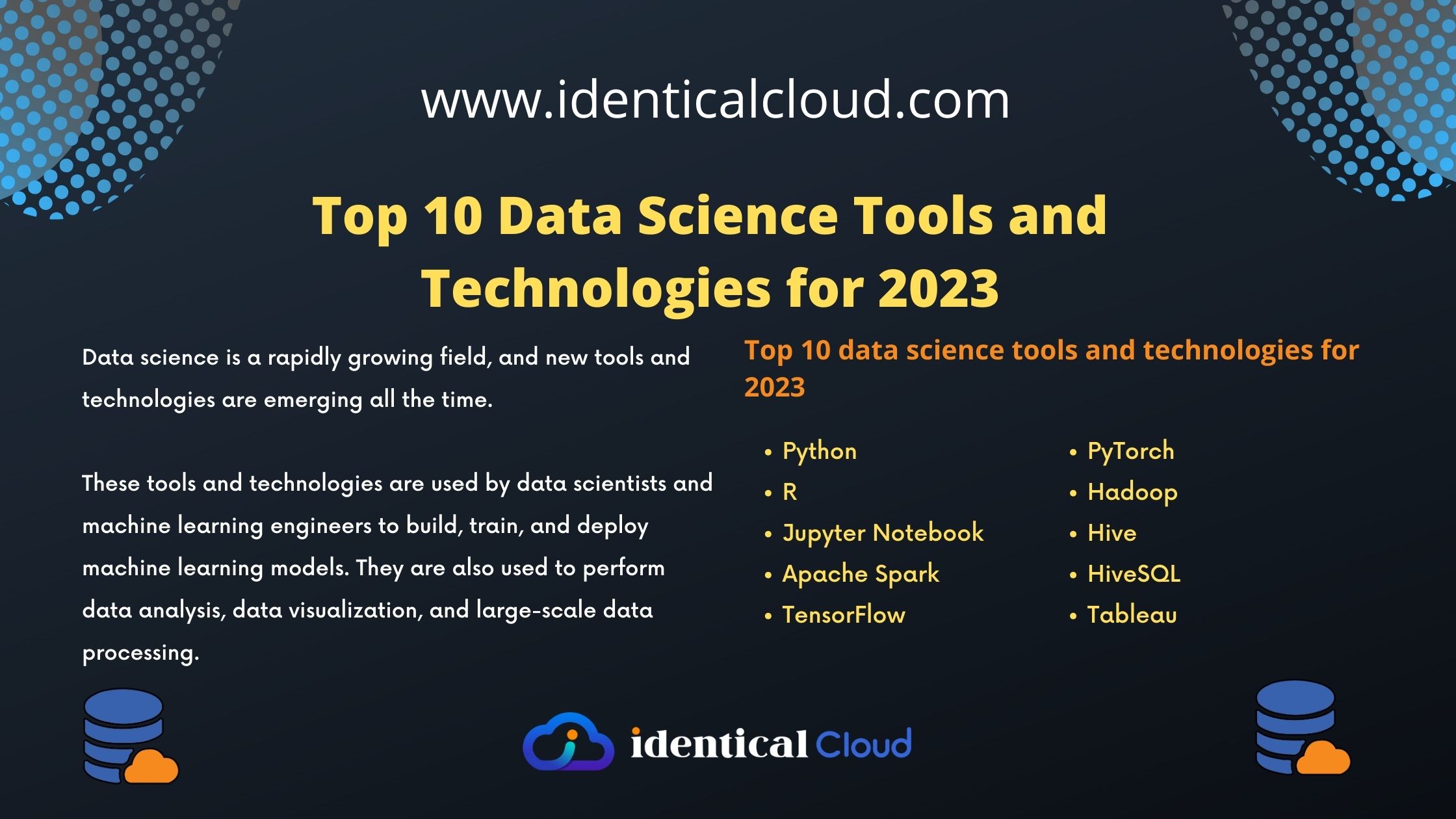
10 Best Programming Languages for Artificial Intelligence
10 Best Programming Languages for Artificial Intelligence
Artificial intelligence (AI) is a rapidly growing field, and the programming languages used to develop AI applications are constantly evolving.
Here are the 10 best programming languages for AI in 2023:
Python
Python is a general-purpose programming language that is known for its simplicity and readability. It is also a very powerful language, and it is used for a wide range of tasks, including machine learning, natural language processing, and computer vision.
Python is a good choice for AI development because it has a large community of developers and a wide range of libraries and frameworks available.
Some of the most popular Python libraries for AI include:
- NumPy: A library for scientific computing, including arrays and matrices.
- SciPy: A library for scientific computing, including functions for signal processing, image processing, and statistics.
- Pandas: A library for data analysis and manipulation, including data frames and data series.
- Matplotlib: A library for data visualization, including plots and charts.
- Seaborn: A library for data visualization, building on Matplotlib.
- Scikit-learn: A library for machine learning, including algorithms for regression, classification, and clustering.
- PyTorch: A library for deep learning, including functions for building and training neural networks.
- TensorFlow: A library for deep learning, including functions for building and training neural networks.
- Keras: A high-level library for deep learning, built on top of TensorFlow or PyTorch.
- Hugging Face Transformers: A library for natural language processing, including pre-trained models for tasks such as text classification, question answering, and machine translation.
- OpenCV: A library for computer vision, including functions for image processing, object recognition, and machine vision.
Java
Java is a general-purpose programming language that is known for its robustness and security. It is also a very popular language in the enterprise world.
Java is a good choice for AI development because it is well-suited for large and complex applications. It also has a good selection of libraries and frameworks available for AI development.
Some of the most popular Java libraries for AI include:
- Weka: A free and open-source machine learning library that provides a wide range of machine learning algorithms and tools.
- Deeplearning4j: A library for deep learning, including functions for building and training neural networks.
- MOA: A library for stream processing and online machine learning.
- H2O.ai: A library for machine learning and deep learning, with a focus on distributed computing and scalability.
- Apache Spark MLlib: A library for machine learning and statistical analysis, built on top of Apache Spark.
- Google AI Platform Client Libraries: A set of libraries that provide access to Google AI Platform services, such as AutoML and Cloud TPUs.
R
R is a statistical programming language that is commonly used for data analysis and visualization. It is also a good choice for AI development, especially for tasks related to natural language processing.
R is a good choice for AI development because it has a wide range of statistical functions available. It also has a good selection of libraries and frameworks available for AI development.
Some of the most popular R libraries for AI include:
- caret: A library for training and evaluating machine learning models.
- Rpart: A library for building and interpreting decision trees.
- randomForest: A library for building and interpreting random forests.
- xgboost: A library for building and interpreting gradient boosting models.
- keras: A library for building and training deep learning models.
- tensorflow: A library for building and training deep learning models.
- h2o: A library for machine learning and deep learning, with a focus on distributed computing and scalability.
- sparklyr: A library for integrating R with Apache Spark.
- mlr3: A unified machine learning framework for R.
- tidymodels: A collection of R packages that provides a consistent and user-friendly interface to machine learning and statistical modeling.
- rpart.plot: A library for visualizing decision trees.
- ggplot2: A library for creating data visualizations.
- tree: A library for visualizing and analyzing decision trees.
Julia
Julia is a relatively new programming language that is designed for high-performance computing. It is gaining popularity in the AI community due to its speed and flexibility.
Julia is a good choice for AI development because it is well-suited for tasks that require high performance, such as machine learning and deep learning. It also has a good selection of libraries and frameworks available for AI development.
Some of the most popular Julia libraries for AI include:
- Flux: A library for deep learning, including functions for building and training neural networks.
- Knet: A library for machine learning, including algorithms for regression, classification, and clustering.
- ScikitLearn.jl: A Julia port of the Scikit-learn machine learning library.
- TensorFlow.jl: A Julia wrapper for the TensorFlow machine learning library.
- MLBase.jl: A library for machine learning and deep learning, with a focus on flexibility and performance.
- Merlin.jl: A library for deep learning, with a focus on distributed computing and scalability.
- DifferentialEquations.jl: A library for solving differential equations, which is useful for developing AI applications that require simulation or modeling.
- Optim.jl: A library for optimization, which is useful for training machine learning models and solving other AI problems.
- StatsBase.jl: A library for statistical computing, which is useful for developing AI applications that require data analysis.
- Plots.jl: A library for data visualization, which is useful for visualizing the results of AI applications.
C++
C++ is a powerful programming language that is often used for low-level programming. It is not as popular as Python or Java for AI development, but it is a good choice for tasks that require high performance.
C++ is a good choice for AI development because it gives developers direct control over the hardware. It also has a wide range of libraries and frameworks available for AI development.
Some of the most popular C++ libraries for AI include:
- TensorFlow: A library for deep learning, including functions for building and training neural networks.
- PyTorch: A library for deep learning, including functions for building and training neural networks.
- Caffe: A library for deep learning, with a focus on speed and efficiency.
- Microsoft Cognitive Toolkit (CNTK): A library for machine learning and deep learning, with a focus on scalability and performance.
- Armadillo: A library for linear algebra and scientific computing.
- mlpack: A library for machine learning, including algorithms for regression, classification, and clustering.
- Eigen: A library for linear algebra and matrix operations.
- Boost: A set of libraries for a variety of tasks, including machine learning, computer vision, and natural language processing.
- OpenCV: A library for computer vision, including functions for image processing, object recognition, and machine vision.
Prolog
Prolog is a logic programming language that is well-suited for tasks such as knowledge representation and reasoning. It is often used in AI applications such as expert systems, natural language processing, and machine learning.
Prolog is a declarative language, which means that the programmer describes what they want the program to achieve, rather than how to achieve it. This can make Prolog programs more concise and readable than programs written in other languages.
Some of the most popular Prolog libraries for AI include:
- SWI-Prolog: A free and open-source Prolog implementation that is widely used in both academia and industry.
- YAP: A commercial Prolog implementation that is known for its performance and scalability.
- Ciao: A commercial Prolog implementation that is known for its support for constraint programming and logic-based machine learning.
- XSB: A Prolog implementation that is known for its support for tabled logic programming.
- Prolog-WAM: A Prolog implementation that is known for its support for multithreaded execution.
However, Prolog can also be more difficult to learn and use than other languages. It is also important to note that Prolog programs can be slow, especially for large and complex problems.
Haskell
Haskell is a functional programming language that is known for its conciseness and readability. It is a good choice for AI development tasks that require mathematical computation.
Haskell is a purely functional language, which means that it does not have any mutable state. This makes Haskell programs more predictable and easier to debug.
Haskell also has a strong type system, which can help to prevent errors in code. However, Haskell can be more difficult to learn and use than other languages, especially for programmers who are not familiar with functional programming.
Some of the most popular Haskell libraries for AI include:
- HLearn: A library for statistical machine learning, including algorithms for regression, classification, and clustering.
- EasyTensor: A library for tensor operations, which are useful for developing deep learning applications.
- Yampa: A library for natural language processing, including parsing, generation, and machine translation.
- BioHaskell: A library for bioinformatics, including algorithms for sequence analysis, phylogenetics, and structural biology.
- ComputerVision: A library for computer vision, including algorithms for image processing, object recognition, and machine vision.
Lisp
Lisp is one of the oldest programming languages still in use. It is a functional programming language that is often used for AI tasks such as symbolic computation.
Lisp is a very versatile language, and it can be used for a wide range of tasks. However, Lisp can also be more difficult to learn and use than other languages. It is also important to note that Lisp programs can be slow, especially for large and complex problems.
Some of the most popular Lisp libraries for AI include:
- CLML (Common Lisp Machine Learning Library): A library for statistical machine learning, including algorithms for regression, classification, and clustering.
- mgl (Machine Learning in Lisp): A library for machine learning, including algorithms for statistical machine learning, symbolic machine learning, and deep learning.
- Antik: A library for symbolic machine learning, including algorithms for decision trees, rule learning, and inductive logic programming.
- LLA (Lisp Logical Algebra): A library for logic programming, including algorithms for reasoning about knowledge and solving constraint problems.
- LispWorks: A commercial Lisp implementation that includes a number of libraries for AI development, such as CLML, mgl, and Antik.
Scala
Scala is a hybrid programming language that combines features of object-oriented and functional programming. It is a good choice for AI development tasks that require both performance and scalability.
Scala has a strong type system, which can help to prevent errors in code. It also has a number of features that make it well-suited for parallel computing.
Some of the most popular Scala libraries for AI include:
- Breeze: A library for numerical processing and scientific computing, which is useful for machine learning and deep learning applications.
- Spark MLlib: A library for machine learning and statistical analysis, which is built on top of Apache Spark.
- DeepLearning.scala: A library for deep learning, which provides a high-level abstraction for developing and training deep learning models.
- Scoot: A library for distributed machine learning, which is built on top of Apache Spark.
- Vegas: A library for data visualization, which can be used to visualize the results of machine learning and deep learning models.
However, Scala can be more difficult to learn and use than other languages, especially for programmers who are not familiar with functional programming.
Rust
Rust is a new programming language that is designed for safety and performance. It is a good choice for AI development tasks that require high performance and security.
Rust has a number of features that make it well-suited for AI development, including:
- A strong type system that can help to prevent errors in code
- Memory safety guarantees
- Support for parallelism
Some of the most popular Rust libraries for AI include:
- TensorFlow-rs: A Rust implementation of the TensorFlow machine learning library.
- PyTorch-rs: A Rust implementation of the PyTorch machine learning library.
- JAX-rs: A Rust implementation of the JAX machine learning library.
- ONNX-rs: A Rust implementation of the ONNX machine learning model interchange format.
- Rust ML: A library for machine learning algorithms, including algorithms for regression, classification, and clustering.
- Rust NLP: A library for natural language processing, including algorithms for parsing, generation, and machine translation.
- Rust CV: A library for computer vision, including algorithms for image processing, object recognition, and machine vision.
However, Rust can be more difficult to learn and use than other languages. It is also important to note that the Rust ecosystem for AI is still relatively young, so there may not be as many libraries and frameworks available as for other languages.
The best programming language for AI development will depend on the specific task at hand. However, Python is a good general-purpose language that is suitable for a wide range of AI applications. Java and R are also good choices for certain types of AI development.








